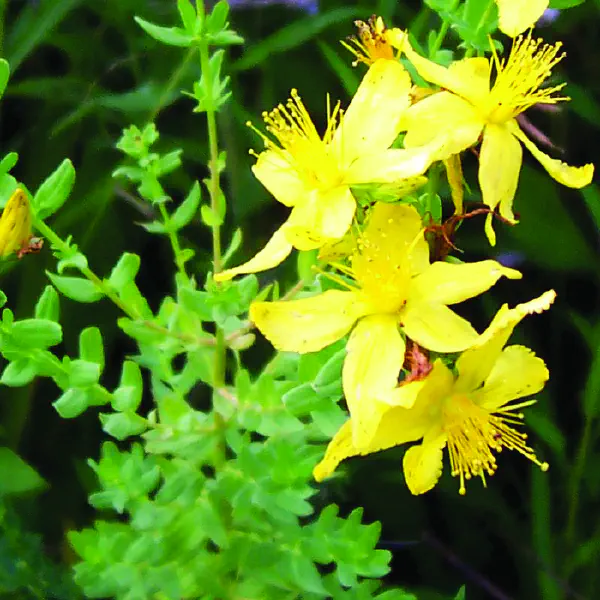Hypericum perforatum
Table of Contents

Scientific Classification
| Kingdom: Plantae |
| Phylum: Tracheophyta |
| Class: Magnoliopsida |
| Order: Malpighiales |
| Family: Hypericaceae |
| Genus: Hypericum |
| Species: Hypericum perforatum |
Conservation Status
Identifying Features
The common St. Johnswort grows to be around 20 inches in height. It has leaves that are rounded and dotted with translucent spots. The flowers appear bright yellow with black dots near the edge and grow in clusters at the end of the stem.
Habitat & Range
The common St. Johnswort can be found in fields and trail-sides, preferably in sandy soil. Though native to Europe, it has been introduced in North America and can be found in parts of Canada and the US.
Behavior
St. Johnswort are known to spread quickly and aggressively. It can produce numerous stems from a single root and can also produce large quantities of seeds that remain viable for several years.
Overexposure to the plant can be toxic to grazing livestock and can cause the skin to be hypersensitive to the sunlight. When consumed in large doses, it can poison animals and cause severe health problems.
Life Cycle
The plant emerges during the spring and can grow in the fall if there is enough moisture in the soil. Flowering happens during the months of June-September with seeds developing between mid-summer to late fall.
Featured image by James Dake.

